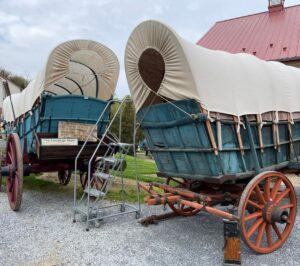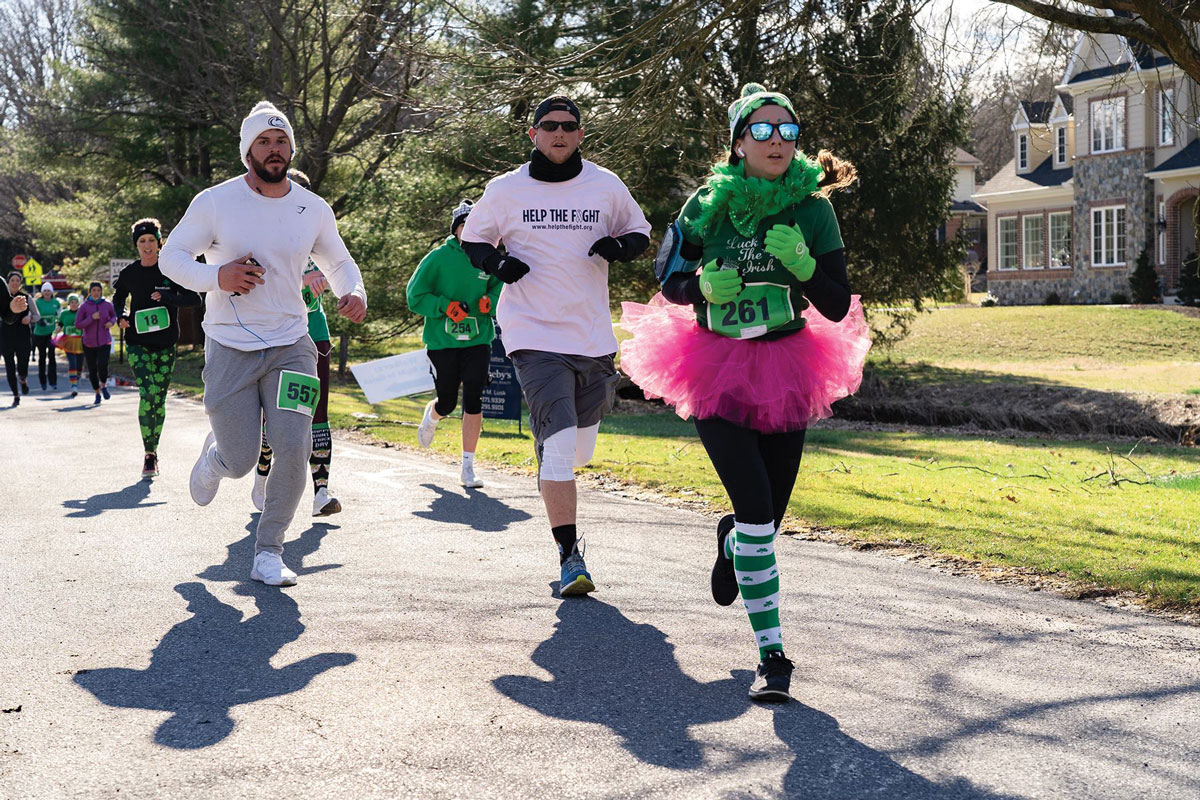Len Lambert, the owner of Backyard Wildlife Solutions in Lititz, is the guy people call when they have a critter in their home or around their property causing a bit of a fuss. Do you have a skunk or groundhog under your deck or backyard shed? A 5-foot black snake in the basement? Len will come and relocate them.

Len Lambert’s love of animals and the outdoors prompted him to launch Backyard Wildlife Solutions, which is based in Lititz. Photo by Anya Witmer.
When I lived in Maine, I awoke early one morning to one of the strangest noises. As the loud clanging, ringing and steady pounding continued, I wondered if something was wrong with the neighbor’s car. After a few minutes it stopped. The following two mornings it happened again and so I had to climb out of bed to investigate.
The culprit was nothing I ever expected. Perched on the reflective stop sign was a pileated woodpecker, its flaming red crest moving at the speed of blur while it pecked away at the sign. What in the heck was wrong with this crazy bird?

Thanks to a background in construction, Len is able to make repairs to damaged areas and add screening and breathable caps to chimneys and vents so that birds, bats and squirrels cannot gain access to homes.
“I had a similar issue with a woodpecker on my gutter, which is metal – like your stop sign – and it created a wild amount of noise. I’m not immune to these issues either,” admits Len. “We do get some calls about woodpeckers, but they are few.” Owning and operating a residential and commercial wildlife-control service is almost a dream come true for the animal and outdoor lover, who can be found enjoying the trails and parks around southeastern Pennsylvania when he’s not working.
SNAKES, BATS, BIRDS …
“Black snakes are very adept at finding ways into homes; we find them in both attics and basements,” Len says, adding he comes across black and garter snakes most often. There are a few other snake species Len has come across in his line of work, but he has fortunately not encountered a venomous snake. “Snakes are a bit concerning to customers. I’ve pulled many 5- and 6-foot black snakes out of homes over the years. The snake in the basement is something that seems to send people over the edge.”
Len specializes in exclusion service, a series of humane, preventative measures to eliminate future damage, entrapment or invasion. When he is called to a home because of a trapped animal or nuisance critter, he can advise a homeowner on the necessary steps that can be taken to stop the situation from happening again and also perform physical installation of deterrents and modifications on a property or structure. “I have a construction background, which is very helpful,” Len explains. “We are fully outfitted for most repairs, from something off a ladder to a repair that requires scaffolding.”
Most of the repairs Len makes are a result of our winged friends. Two of the most prolific perpetrators are house sparrows and starlings, which are both considered invasive species. Both birds like to nest in bathroom exhaust vents, especially in the spring. They also nest behind shutters and can cause quite a mess, notes Len, who even created a custom guard system to prevent the birds from returning.
His business also allows Len to work with rats, mice, squirrels, chipmunks, moles, voles and shrews, all of which can leave behind unsanitary conditions to remediate. He even tackles larger animals like groundhogs, opossum, raccoons and skunks.
He also frees bats from homes (and reminds homeowners bats can carry rabies). Removal of a colony of bats – not just the one that has flown into the kitchen on a summer evening – is regulated and those bats can only be moved during the months of September through May. After squirrels, bats make up the largest portion of his service calls.
A SQUIRRELLY SITUATION
“I’ve chased squirrels all around a home,” Len shares, trying to recall the craziest animal exploits he has encountered. “And I’ve used a variety of objects to try and herd squirrels out of homes.”
One of the worst cases Len has seen involved a squirrel going into a rooftop plumbing ventilation pipe, which is a rare occurrence. The squirrel did not get stuck in the pipe as one would expect, but rather the pipe became dislodged, allowing the squirrel access to the entire house … while the homeowner was away on vacation. The trapped critter chewed its way into the ventilation system, gnawed under every door and munched on windowsills in an attempt to find a way out of the house.
After making the discovery on her return to a home filled with wood chips and vinyl shavings, the homeowner called Len, who was able to direct the squirrel out of the house almost immediately. “We installed a breathable cap on the pipe after the incident so it would never happen again,” he recalls.
MR. WOODPECKER
Woodpeckers, like many other birds in our area, are protected under the Federal Migratory Bird Treaty Act, so most of what Len can do is create a deterrent and limit a bird’s ability or desire to drill into a home. He follows all state and federal guidelines for all animals.
When animals are relocated, they are given sanctuary in one of the many designated game lands in the state. “I have a couple spots I use regularly that are less popular with humans,” Len explains. “That way there is not a crowd gathering around as the opossum or snake goes to his new home in the forest.”
As for the woodpecker on the stop sign, I learned from the biology department at the university I was attending that he was looking for a mate; having no song to sing, the louder the banging the better chance of attracting a nearby female. He just went away after about a week … happily ever after I assume.
For more information, visit paanimalremoval.com.
















































































